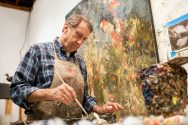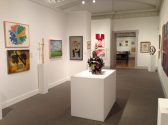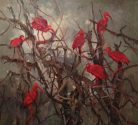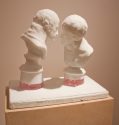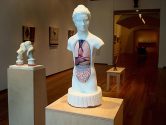
Of all the artists this city has produced, there are probably none more representative of its iconic mix of flamboyant elegance and earthy eccentricity than George Dureau. Now 82, the painter and photographer was a French Quarter fixture for decades until his recent move to an assisted living facility. Despite his dexterously deft brushwork, most of his international reputation is based on a photographic oeuvre in which all aspects of formal technique are harnessed to his genius for conveying a striking humanistic presence. In this, he profoundly influenced one of his early studio assistants, a young man named Robert Mapplethorpe, who went on to become a New York art star. But Mapplethorpe could not match his mentor’s depth, as even that city’s art critics have noted in recent years. The work seen here is a classic Dureau sampler, and while it is easy to understand the popularity of his flamboyant paintings and drawings, it is his photographs that, while not for the faint of heart, will ensure his place in art history.
Read More


